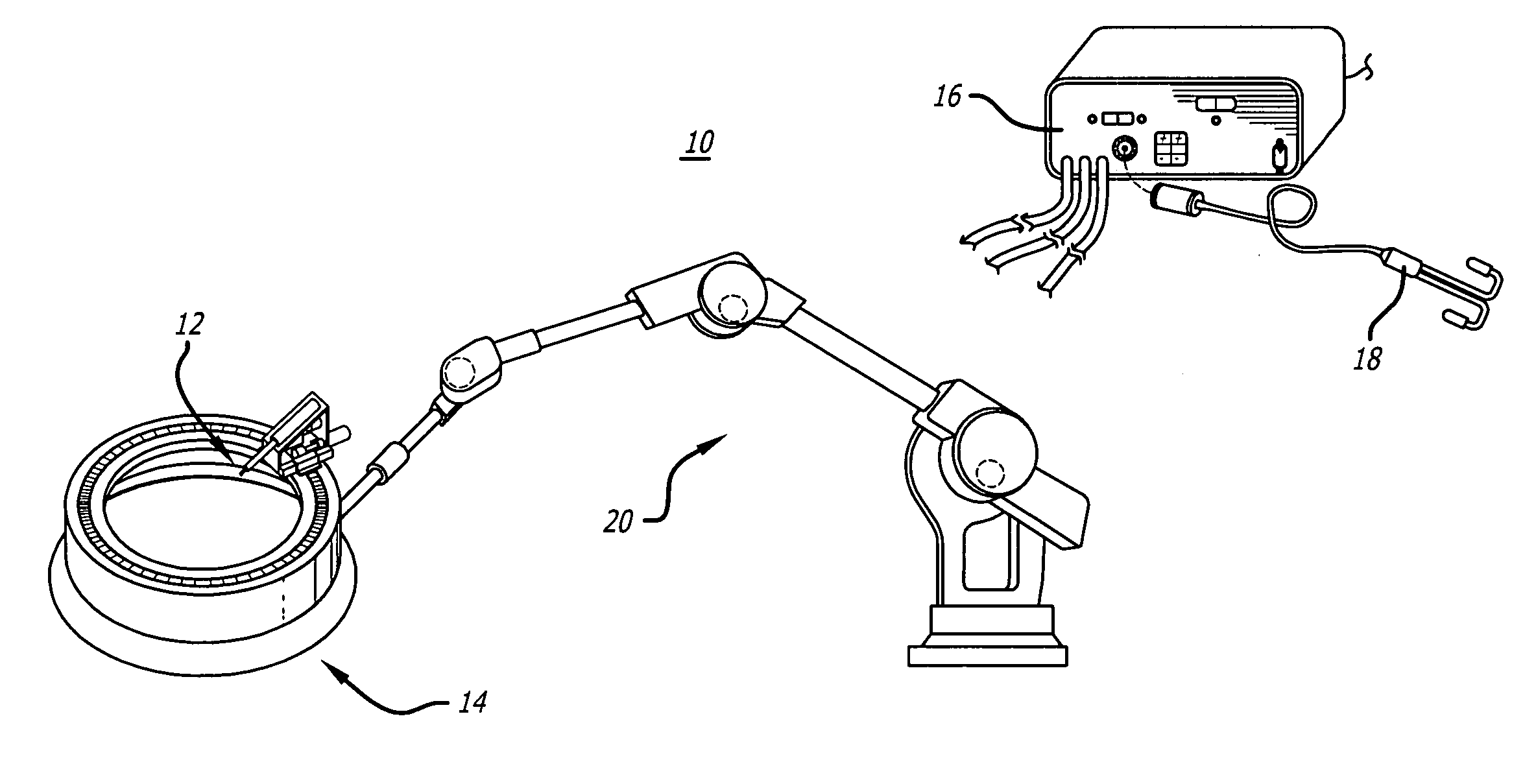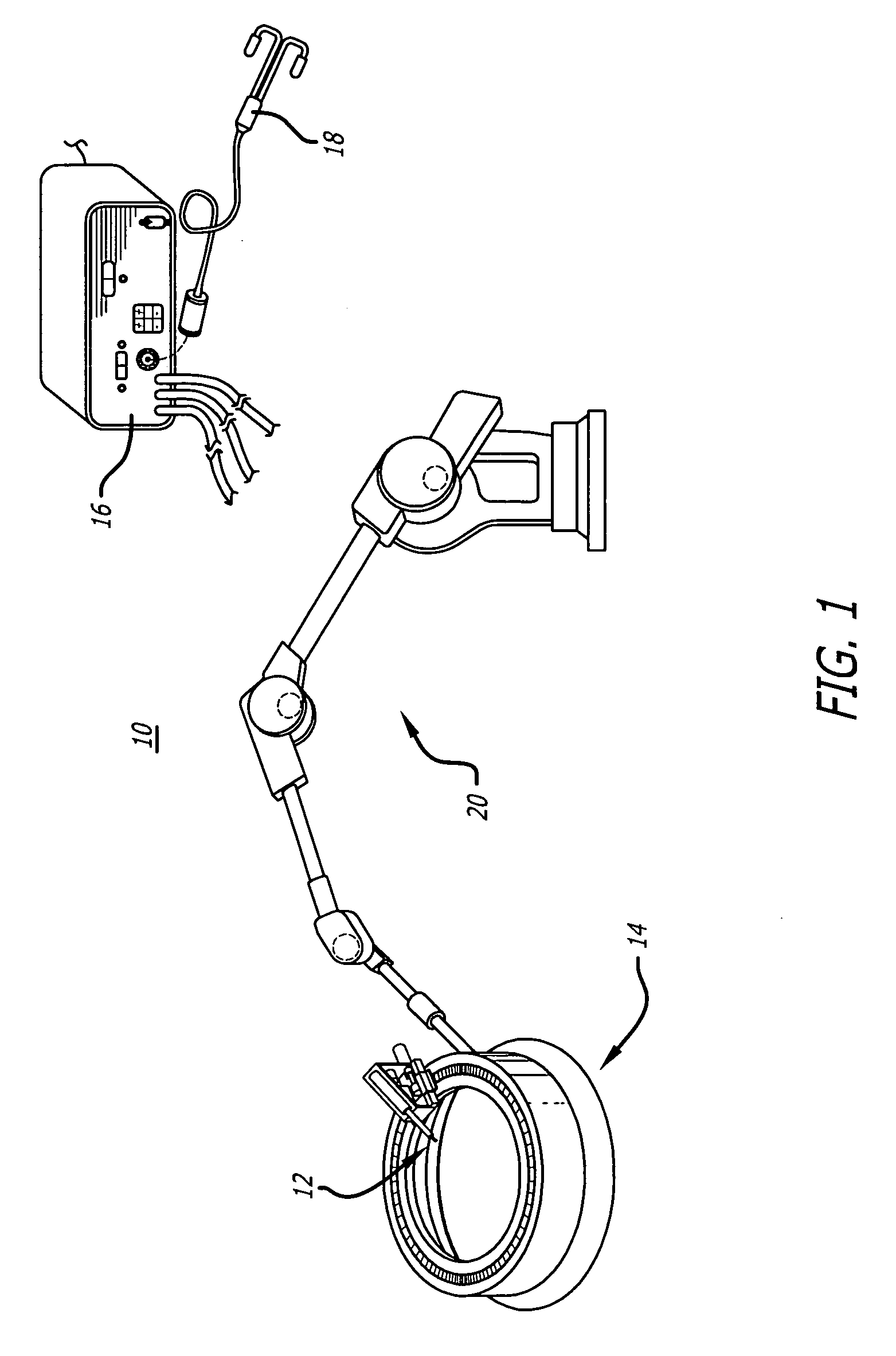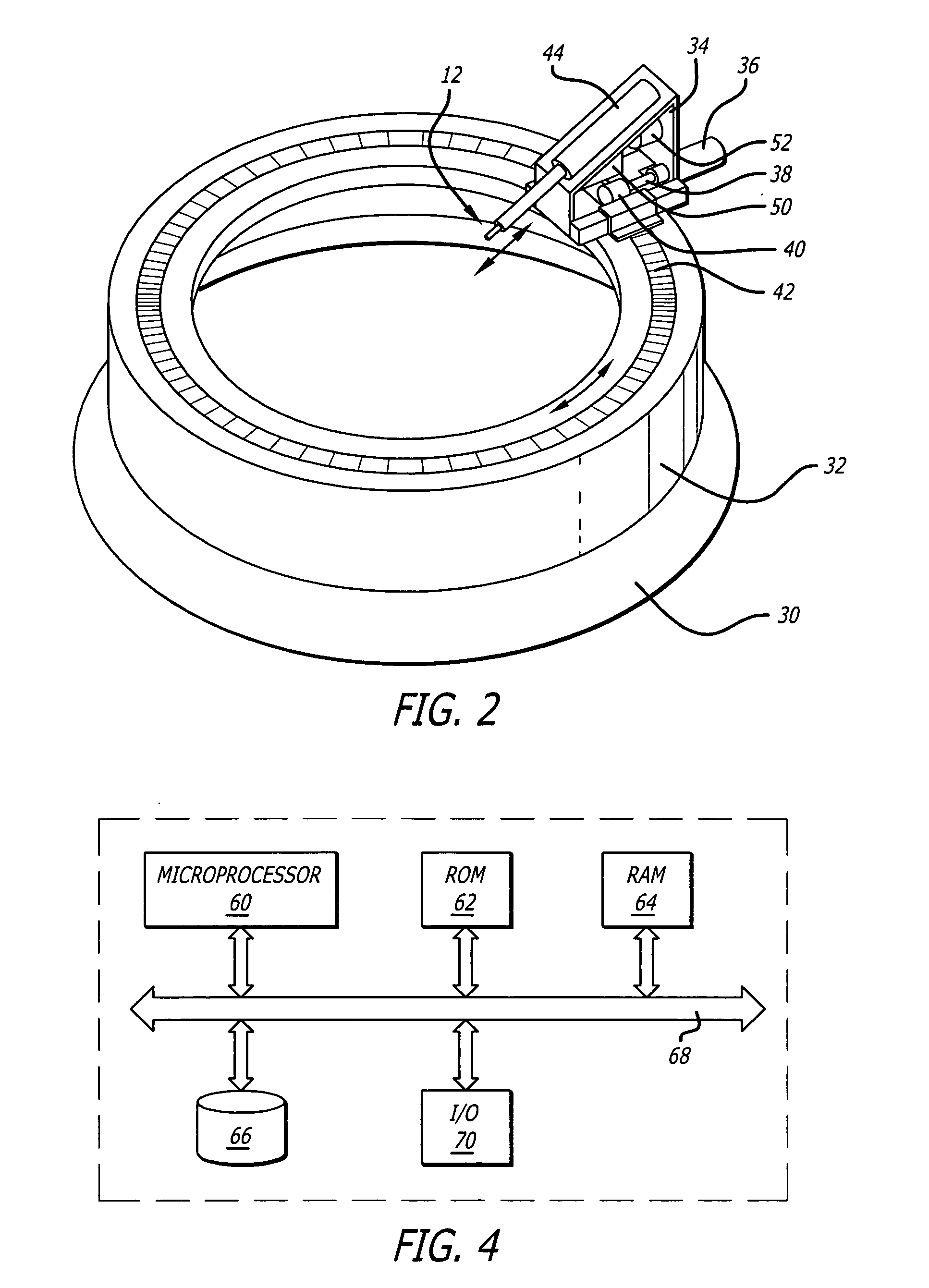Method and apparatus to automatically insert a probe into a cornea
a technology of corneal probe and probe, which is applied in the field of thermokeratoplasty system, can solve the problems of glaring effect in the visual field, risk of puncturing the descemets membrane and the endothelium layer, and permanent damage to the ey
- Summary
- Abstract
- Description
- Claims
- Application Information
AI Technical Summary
Benefits of technology
Problems solved by technology
Method used
Image
Examples
Embodiment Construction
[0024] Disclosed is an apparatus that is used to perform a medical procedure on a cornea. The apparatus may include a ring that can be placed on a cornea and a probe that can deliver energy to denature corneal tissue. The probe can be moved about the ring and cornea by a first actuator. A second actuator may move the probe into contact with the cornea to deliver energy and denature tissue. The process of moving the probe and delivering energy can be repeated to create a circular pattern of denatured areas. The circular pattern of denatured areas may correct for hyperopia. The actuators may be controlled by a controller that operates in accordance with a program to move the probe and create the circular pattern of denatured areas in an automated process.
[0025] Referring to the drawings more particularly by reference numbers, FIG. 1 shows a system 10 that can be used to perform a medical procedure on a cornea. The system 10 includes a probe 12 coupled to an automated suction ring ass...
PUM
 Login to View More
Login to View More Abstract
Description
Claims
Application Information
 Login to View More
Login to View More - R&D
- Intellectual Property
- Life Sciences
- Materials
- Tech Scout
- Unparalleled Data Quality
- Higher Quality Content
- 60% Fewer Hallucinations
Browse by: Latest US Patents, China's latest patents, Technical Efficacy Thesaurus, Application Domain, Technology Topic, Popular Technical Reports.
© 2025 PatSnap. All rights reserved.Legal|Privacy policy|Modern Slavery Act Transparency Statement|Sitemap|About US| Contact US: help@patsnap.com



